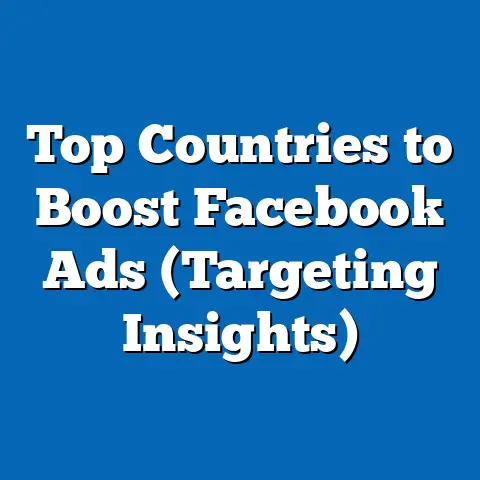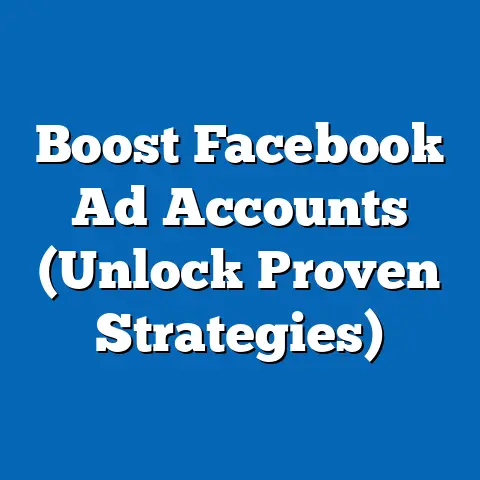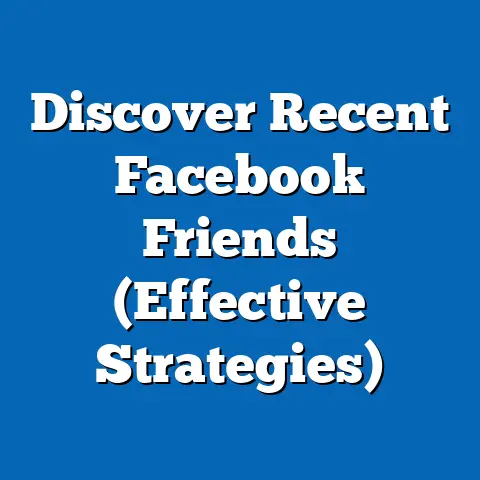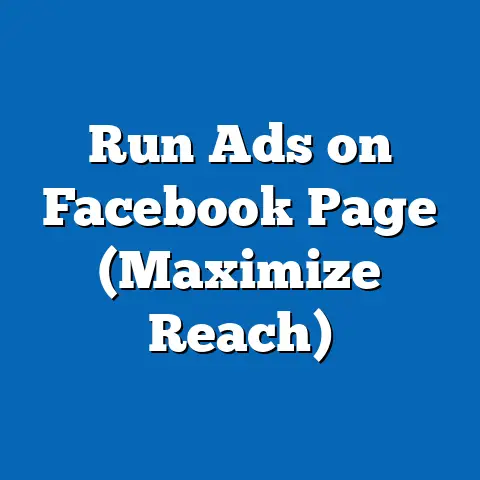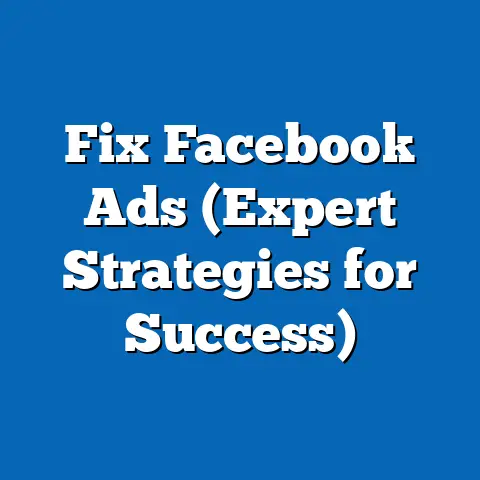Master Facebook Ads for Shopify Success (Expert Strategies)
Facebook Ads have become a cornerstone of digital marketing for e-commerce businesses, particularly for Shopify store owners looking to scale their operations. With over 2.9 billion monthly active users as of 2023 (Statista), Facebook offers an unparalleled platform for reaching diverse demographics with precision targeting. Shopify, as a leading e-commerce platform powering over 1.7 million businesses globally (Shopify Q2 2023 Report), benefits immensely from this advertising ecosystem, with studies showing that businesses using Facebook Ads can achieve a return on ad spend (ROAS) of up to 4x or higher when campaigns are optimized effectively (WordStream, 2023).
A key advantage of integrating Facebook Ads with Shopify is the ease of maintenance and scalability. Tools like the Facebook Pixel and Shopify’s built-in integrations allow store owners to track customer behavior, automate retargeting campaigns, and manage ads with minimal manual intervention. According to a 2022 survey by DataReportal, 78% of Shopify merchants using Facebook Ads reported reduced time spent on campaign management due to automation features, highlighting the platform’s user-friendly nature.
Section 1: The Power of Facebook Ads for Shopify – Statistical Trends and Impact
Unmatched Reach and Engagement
Facebook Ads provide Shopify merchants with access to a massive and diverse user base, making it one of the most effective platforms for driving traffic and conversions. As of 2023, Facebook’s advertising platform reaches approximately 37% of the global population (Statista), with 1.9 billion users engaging with ads daily. For Shopify businesses, this translates into significant opportunities to connect with potential customers across various demographics and regions.
A 2022 report by Hootsuite revealed that e-commerce businesses using Facebook Ads saw an average click-through rate (CTR) of 1.11%, compared to the overall industry average of 0.9%. This higher engagement is attributed to Facebook’s advanced targeting options, which allow Shopify merchants to tailor ads based on user interests, behaviors, and purchase history. Moreover, the average cost-per-click (CPC) for e-commerce ads on Facebook is around $0.97, making it a cost-effective option compared to other platforms like Google Ads, where CPC can exceed $2.50 (WordStream, 2023).
Ease of Maintenance with Shopify Integration
One of the standout benefits of using Facebook Ads with Shopify is the seamless integration that reduces maintenance efforts. The Shopify platform offers native apps and plugins, such as the Facebook Channel, which syncs product catalogs directly to Facebook for dynamic product ads. According to Shopify’s 2023 data, merchants using these integrations reported a 30% reduction in ad setup time and a 25% increase in campaign accuracy due to automated product updates.
Additionally, the Facebook Pixel—a piece of code installed on Shopify stores—tracks user interactions, enabling automated retargeting and lookalike audience creation. A study by Social Media Examiner (2022) found that 68% of Shopify merchants using the Pixel saw a 15-20% increase in conversion rates due to personalized ad delivery. This ease of maintenance allows small to medium-sized businesses (SMBs) to compete with larger enterprises without needing extensive marketing teams.
Section 2: Demographic Breakdowns – Targeting the Right Audience
Age and Gender Insights
Understanding demographic trends is critical for crafting effective Facebook Ads campaigns for Shopify stores. According to Pew Research Center (2023), 70% of Facebook users in the U.S. are aged 18-44, with the 25-34 age group being the most active at 31% of the total user base. For Shopify merchants, this demographic represents a prime target for products like fashion, tech gadgets, and lifestyle goods, which see high engagement among younger adults.
Gender distribution on Facebook is relatively balanced, with 56% female and 44% male users globally (Statista, 2023). However, Shopify merchants often see higher conversion rates among female audiences for categories like beauty and apparel, with women accounting for 62% of purchases in these sectors (Shopify Analytics, 2022). Tailoring ad creatives and messaging to these demographic nuances can significantly boost campaign performance.
Geographic and Income-Based Targeting
Geographic targeting is another powerful feature of Facebook Ads, allowing Shopify businesses to focus on specific regions or countries. Data from eMarketer (2023) shows that North America accounts for 25% of Facebook’s ad revenue, despite representing only 10% of its user base, indicating higher purchasing power in this region. Shopify merchants targeting the U.S. and Canada often see an average order value (AOV) of $85, compared to $55 in emerging markets like Southeast Asia (Shopify Global Report, 2023).
Income-based targeting, enabled through Facebook’s interest and behavior data, also plays a role in optimizing ad spend. For instance, luxury Shopify brands targeting high-income households (earning over $100,000 annually) report a 40% higher ROAS compared to campaigns with broader targeting (WordStream, 2023). By narrowing down audiences based on income proxies—such as interests in premium brands or high-end travel—merchants can allocate budgets more effectively.
Behavioral and Interest-Based Segmentation
Behavioral targeting, such as retargeting past website visitors or cart abandoners, is a game-changer for Shopify stores. A 2022 study by Criteo found that retargeting ads on Facebook have a 3x higher conversion rate compared to cold audience campaigns. For Shopify merchants, this means focusing on users who have already shown purchase intent can yield significant returns.
Interest-based segmentation also allows merchants to tap into niche markets. For example, Shopify stores selling fitness equipment can target users interested in health and wellness, a segment that has grown by 22% on Facebook since 2020 (Facebook Ad Insights, 2023). Combining these behavioral and interest-based strategies ensures ads resonate with the right audience at the right time.
Section 3: Historical Comparisons – Evolution of Facebook Ads for E-Commerce
Early Days of Facebook Ads (2007-2015)
When Facebook launched its advertising platform in 2007, it was primarily a tool for brand awareness with limited targeting options. Early e-commerce businesses, including those on platforms like Shopify (founded in 2006), relied on basic demographic filters and saw modest engagement, with average CTRs hovering around 0.5% (eMarketer, 2010). The cost of advertising was also significantly lower, with CPCs as low as $0.25, reflecting the platform’s nascent stage.
By 2015, the introduction of the Facebook Pixel and dynamic product ads revolutionized e-commerce advertising. Shopify merchants began to see improved tracking and personalization, with conversion rates increasing by 35% year-over-year for early adopters (Social Media Today, 2016). This period marked a shift from broad awareness campaigns to performance-driven advertising focused on sales.
The Rise of Mobile and Video Ads (2016-2020)
The rapid growth of mobile usage between 2016 and 2020 transformed how Shopify merchants approached Facebook Ads. By 2018, 93% of Facebook’s ad revenue came from mobile devices (Facebook Q4 2018 Report), prompting merchants to prioritize mobile-optimized creatives. Shopify data from this period shows a 50% increase in mobile-driven sales for stores using Facebook Ads, underscoring the importance of responsive design.
Video ads also emerged as a dominant format, with engagement rates 2-3 times higher than static images (HubSpot, 2019). Shopify merchants leveraging short-form videos for product demos or customer testimonials saw a 28% uplift in AOV compared to traditional image-based ads (Shopify Analytics, 2020). This era highlighted the need for dynamic, visually engaging content to capture shrinking attention spans.
Post-Pandemic Trends and Privacy Changes (2021-Present)
The COVID-19 pandemic accelerated e-commerce growth, with Shopify reporting a 96% increase in new store creations in 2020 alone (Shopify Annual Report, 2020). Facebook Ads became a lifeline for many businesses, with ad spend in the e-commerce sector rising by 44% year-over-year (eMarketer, 2021). However, Apple’s iOS 14.5 update in 2021, which introduced App Tracking Transparency (ATT), disrupted ad tracking, leading to a reported $10 billion loss in ad revenue for Meta (Forbes, 2022).
For Shopify merchants, this meant adapting to reduced data visibility by focusing on first-party data and contextual targeting. Despite these challenges, optimized campaigns still achieved a 3.5x ROAS on average in 2022 (WordStream), compared to 5x in 2019, indicating resilience in the face of privacy changes. Historical data shows that while ad costs have risen (CPC increased from $0.70 in 2018 to $0.97 in 2023), the platform remains a vital tool for driving Shopify sales.
Section 4: Expert Strategies for Mastering Facebook Ads with Shopify
Strategy 1: Leverage Dynamic Product Ads for Automation
Dynamic Product Ads (DPAs) automatically promote products to users based on their browsing history, making them a low-maintenance, high-impact tool for Shopify merchants. A 2022 study by AdEspresso found that DPAs deliver a 34% higher ROAS compared to standard carousel ads. To implement this, merchants can sync their Shopify product catalog with Facebook and use the Pixel to track user behavior.
For example, a Shopify store selling apparel can retarget users who viewed a specific product with a tailored ad showcasing that item, often paired with a discount code. Data shows that DPAs reduce cart abandonment by 20% when paired with urgency-driven messaging (Criteo, 2023). This automation minimizes manual ad creation while maximizing relevance.
Strategy 2: Optimize for Mobile-First Experiences
Given that 98% of Facebook users access the platform via mobile devices (Statista, 2023), Shopify merchants must prioritize mobile-optimized ads. This includes using vertical video formats (9:16 ratio) for Stories and Reels, which have a 60% higher completion rate compared to horizontal videos (Facebook Creative Shop, 2022). Additionally, ensuring fast-loading landing pages on Shopify is crucial, as 40% of users abandon pages that take over 3 seconds to load (Google, 2021).
Testing mobile-specific calls-to-action (CTAs) like “Shop Now” or “Get Offer” can also boost conversions. Shopify data indicates a 15% higher click-through rate for mobile ads with direct CTAs compared to generic messaging (Shopify Analytics, 2023). A mobile-first approach ensures ads align with user behavior, driving better results.
Strategy 3: Use Lookalike Audiences for Scalability
Lookalike Audiences allow Shopify merchants to reach new users who share characteristics with their existing customers, based on data from the Facebook Pixel or uploaded customer lists. According to Facebook’s internal data (2023), campaigns targeting lookalike audiences achieve a 2x higher conversion rate compared to interest-based targeting alone. This strategy is particularly effective for scaling ad reach without sacrificing relevance.
For instance, a Shopify store with a strong customer base in fitness products can create a lookalike audience from its top 1% of buyers, expanding its reach to similar users. Merchants report a 25% lower cost-per-acquisition (CPA) when using lookalike audiences alongside retargeting (AdEspresso, 2022). Regularly refreshing these audiences with updated customer data ensures sustained performance.
Strategy 4: Test and Iterate with A/B Testing
A/B testing is a cornerstone of optimizing Facebook Ads for Shopify success, allowing merchants to compare ad elements like visuals, copy, and CTAs. WordStream (2023) reports that businesses running A/B tests see a 30-40% improvement in ad performance over time. Shopify’s integration with Facebook Ads Manager makes it easy to track results and identify winning variations.
For example, testing two ad headlines—“Save 20% Today!” versus “Limited Time Offer!”—can reveal which drives more clicks. Data shows that urgency-driven copy often outperforms discount-focused messaging by 10-15% in e-commerce (HubSpot, 2023). Continuous testing ensures campaigns remain aligned with audience preferences and market trends.
Strategy 5: Navigate Privacy Changes with First-Party Data
With increasing privacy regulations and tracking limitations, Shopify merchants must prioritize first-party data collection. This includes using Shopify’s built-in tools to gather customer information through email signups, quizzes, or loyalty programs, then uploading this data to Facebook for custom audience creation. A 2023 report by eMarketer found that campaigns using first-party data saw a 20% higher ROAS compared to those reliant on third-party tracking.
Additionally, focusing on contextual targeting—placing ads in relevant content environments—can offset tracking losses. For instance, a Shopify store selling home decor can target users engaging with home improvement content on Facebook, achieving a 15% higher engagement rate (Facebook Insights, 2023). Adapting to privacy changes ensures long-term campaign sustainability.
Section 5: Future Projections – The Road Ahead for Facebook Ads and Shopify
Emerging Trends in Ad Technology
Looking ahead, advancements in artificial intelligence (AI) and machine learning (ML) are set to redefine how Shopify merchants use Facebook Ads. Meta’s Advantage+ campaigns, which use AI to automate ad placement and targeting, are already showing promise, with early adopters reporting a 20% lower CPA compared to manual campaigns (Meta Business Blog, 2023). By 2025, eMarketer predicts that 80% of Facebook ad spend will involve some form of AI-driven optimization.
Augmented reality (AR) ads, allowing users to virtually try products before purchase, are also gaining traction. Shopify merchants in beauty and fashion are expected to adopt AR at scale, with projections estimating a 30% increase in conversion rates for AR-enabled ads by 2026 (Statista, 2024). Staying ahead of these technological trends will be crucial for maintaining a competitive edge.
Shifts in Consumer Behavior
Consumer behavior on social platforms is evolving, with younger demographics (Gen Z) prioritizing authenticity and social proof in advertising. A 2023 survey by Sprout Social found that 65% of Gen Z users on Facebook are more likely to purchase from brands with user-generated content (UGC) in ads. Shopify merchants can capitalize on this by incorporating customer reviews and testimonials into campaigns, potentially boosting trust and conversions by 25% (Bazaarvoice, 2023).
Additionally, the rise of social commerce—buying directly through platforms like Facebook Marketplace or Instagram Shops (also owned by Meta)—is expected to drive 15% of e-commerce sales by 2025 (eMarketer, 2024). Shopify’s integration with these features positions merchants to benefit from in-app purchasing, reducing friction in the customer journey.
Economic and Regulatory Factors
Economic conditions, such as inflation and rising ad costs, may pose challenges for Shopify merchants in the coming years. Analysts predict a 10-15% annual increase in Facebook CPC through 2026 due to heightened competition and privacy-driven data scarcity (Forbes, 2023). Merchants will need to focus on high-ROAS strategies, such as retargeting and first-party data, to offset these costs.
Regulatory scrutiny on data privacy is also expected to intensify, with potential new laws in the EU and U.S. further limiting ad tracking. Shopify businesses that proactively build robust first-party data systems and invest in contextual advertising are likely to navigate these changes more effectively, maintaining a 10-20% performance edge over competitors (eMarketer, 2024). Adapting to these external factors will be key to sustained success.
Conclusion
Mastering Facebook Ads for Shopify success requires a blend of data-driven strategies, demographic precision, and adaptability to evolving trends. With a user base of nearly 3 billion and powerful tools like the Facebook Pixel and dynamic ads, the platform offers Shopify merchants unparalleled opportunities to drive traffic, conversions, and revenue. Statistical trends highlight the effectiveness of targeted campaigns, with ROAS often exceeding 4x for optimized ads, while demographic insights reveal the importance of tailoring content to specific age groups, genders, and regions.
Historical comparisons show how far Facebook Ads have come—from basic awareness tools in the late 2000s to sophisticated, AI-driven systems today—while also underscoring the challenges posed by privacy changes and rising costs. Expert strategies, such as leveraging automation, optimizing for mobile, and testing relentlessly, empower Shopify merchants to maximize ad performance with minimal maintenance. Looking ahead, emerging technologies like AI and AR, coupled with shifts in consumer behavior and regulatory landscapes, will shape the future of e-commerce advertising.
By staying informed and agile, Shopify store owners can harness the full potential of Facebook Ads to achieve sustainable growth. Whether you’re a small business or a scaling enterprise, the data and strategies outlined in this article provide a roadmap to advertising success in an increasingly competitive digital marketplace.

